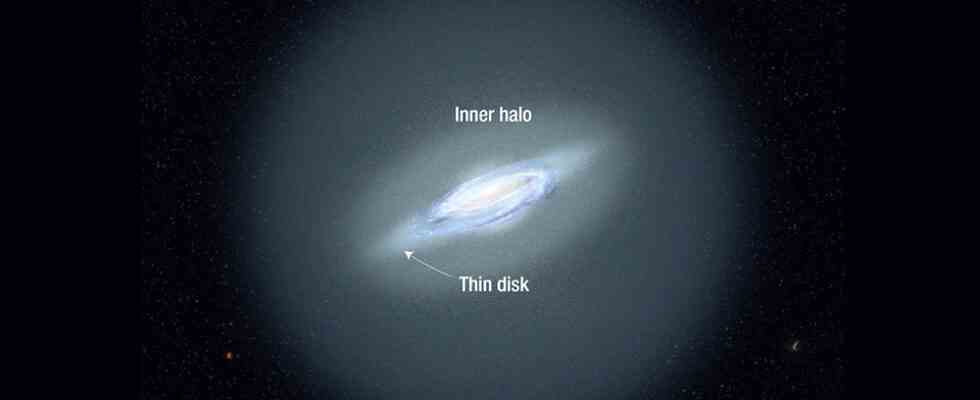Far out: The Milky Way extends almost to the edge of the Andromeda galaxy. Because the outermost stars in the halo of our galaxy are more than a million light-years away from us, as astronomers have found out. These distance measurements pinpoint the extent of the Milky Way and confirm that the halo extends much farther into space than the visible star disk. The envelopes of the Andromeda galaxy and the Milky Way could even touch.
The Milky Way and its nearest neighbor the Andromeda Galaxy are galactic sisters: both are spiral galaxies of similar size and mass, together they are by far the largest members of our Local Group in the cosmos. The Milky Way and Andromeda are still around 2.5 million light years apart, but according to astronomical calculations they will be in almost four billion years collide with each other and merge.
But the two galaxies are already getting close: astronomers already had 2020 established, the ionized gas in the halo of the Andromeda galaxy extends further into space than previously thought. The halo of our neighboring galaxy could already touch that of the Milky Way, so the assumption.
Pulsing stars as range finders
Now it turns out that the halo of the Milky Way extends further than long thought. For their study, astronomers led by Yuting Feng from the University of California in Santa Barbara evaluated data from a sky survey with the Canada-France-Hawaii Telescope in Hawaii and were specifically looking for so-called RR Lyrae stars. The peculiarity of the RR Lyrae stars is that these old giant stars are getting brighter and darker at a regular rate.
“Their brightness fluctuations are a bit like an EKG – they are, in a sense, the pulse of our galaxy,” says Feng’s colleague Raja Guha Thakurta. The speed of this change in brightness is directly linked to the luminosity and size of the star. This enabled the astronomers to determine the distances of around 200 of these stars in the outskirts of the Milky Way with particular precision. “We were able to use these variable stars as reliable markers of distances in the halo,” says Feng.
identified the outer edge of the Milky Way
The analysis revealed: Some RR Lyrae stars in the halo of the Milky Way lie more than a million light-years away from us. This makes them the outermost and most distant stars in our galaxy that have been measured to date. For comparison: the dense star disk of our galaxy is only around 100,000 light-years across. “The distant RR Lyrae stars provide us with a good tool to test our current models of the size and mass of our galaxy,” says Feng.
Observations so far have revealed some details from the halo’s outer regions, but where exactly it stops could only be estimated using theoretical models. “The halo is the most difficult to measure because its outer edge is so far away and the stars in it are very sparse,” explains Guha Thakurta. Most of this outer envelope is occupied by the ionized gases of the galactic medium and dark matter. “Now our study is redefining the outer limits of our galaxy,” says the astronomer.
Almost to the Andromeda galaxy
The new data also shows that the Milky Way’s stellar halo extends almost half the distance from the Andromeda Galaxy. “Our galaxy and Andromeda are both so big that there is almost no space between them,” says Guha Thakurta. This confirms that the halos of both galaxies are touching and maybe even overlapping. (241.Meeting of the American Astronomical Society, 2023)
Source: University of California-Santa Cruz

